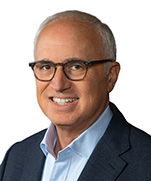Drones fly upward as they leave skyscrapers covered in carefully maintained moss and leaves. Delivery robots traverse the street where voice-controlled smart homes order pizza on the word of their homeowners. Up rolls an autonomous vehicles as Khalid, a popular music artist, steps out singing about “The New Normal.”
Khalid’s new music video presents a lush technology-enhanced future that may not be too far away. Even today, drones, robots, and autonomous vehicles are exceedingly more normal than ever before. At the Ohio State University, students can have their orders from on-campus dining locations delivered by robot. Through a partnership between Yandex Self Driving Group (SDG) and Grubhub, 50 robots stand-by to deliver food at just the right temperature regardless of the weather or day of the week.
Peter Szelei of Yandex SDG said, “By partnering with Grubhub, we can bring robotic delivery to some of the people who need it most – students, researchers, and professors who are short on time…Imagine ordering morning coffee and grabbing it from a robot waiting at your doorstep as you head out to class, or studying in a park with friends and requesting a rover to roll up and deliver snacks.”
Grubhub is not alone in realizing the potential of drone delivery. Walmart recently announced their plan to make their last-mile delivery service available to local business through their new service, GoLocal. By utilizing their partnerships with Cruise, Waymo, Nuro, DroneUp, ZipLine, and FlyTrex, Walmart plans to provide a platform for local commerce to get their branded products to consumers using cutting edge technology. Platforms like GoLocal will empower businesses of all sizes to benefit from innovation and normalize the participation of new technology in consumers’ lives. Now, even your local bakery could deliver goods in minutes flat using reliable drones, not just large corporations.
Drones and robots are not the only new technologies capable of autonomous delivery. In fact, Plus recently demonstrated Level 4 autonomous driving of a semi-truck on a highway. Plus, a global provider of self-driving technology to the trucking industry, completed the demonstration on a highway in China. The truck, as evidenced by the video, drove smoothly and safely. Plus plans to launch “pilot operations of a fully driverless truck for use in a dedicated environment” in 2022.
Perhaps even sooner, autonomous shuttles will become “normal” to the everyday commuter. Communities in Michigan, Colorado, and Canada have recently introduced autonomous shuttles as part of their solution to their citizen’s transportation challenges. The Colorado School of Mines and Golden, Colorado have partnered to introduce the nation’s largest autonomous electric shuttle fleet to help students and locals navigate campus and the city free of charge. In Canada, SmartCone and the Town of Whitby, Ontario have convened multiple partners to introduce an electric autonomous vehicle (the WAVE) along a route with smart infrastructure technology to assist and inform riders. The WAVE will operate along the waterfront in Whitby driving through residential, recreational, and industrial areas. In Grand Rapids, May Mobility announced the launch of an expanded on-demand AV shuttle service with more than 20 designated drop-off and pick-up locations, along a 1.36 square mile service zone.
Lastly, the autonomous vehicles cruising through Khalid’s new normal continue to accelerate toward acceptance. Waymo recently announced it is bringing its “Trusted Tester” program to San Francisco. Now, riders in San Francisco can use the Waymo App to request a ride anywhere in the service area from a Waymo vehicle, accompanied by a safety driver. San Francisco’s hometown AV company, Cruise, recently made its own ground-breaking announcement. Through their Farm to Fleet program, Cruise will pay two Central Valley Farms for the solar power to its all-electric fleet. By paying the farms for renewable energy credits equal to the amount of energy they use, Cruise hopes to support areas of the state that might not see autonomous vehicles for a while longer.
Cruise’s vice president of social affairs and global impact, Rob Grant said, “We’re tying urban issues and rural issues together in a way that, I think, benefits everybody. We looked intentionally at where we can make this connection in parts of California that are not normally thought of as a hotbed for autonomous vehicles and electric vehicles.”
While Khalid’s “New Normal” music video might not depict a city totally familiar to consumers, autonomous vehicles are not a future technology, but exist in our present. Drones and self-driving cars are a part of the new normal – our autonomous future.


